That’s it – you’re taking the plunge and going to learn to kite! It’s an exciting time with so much to learn. So, where do you start? What do you need to know before you take the plunge (so to speak) and get on your way to becoming a kiteboarder? Firstly it might be useful to check out the REAL kiteboarding jargon buster to get to grips with some of the kite specific phrases you will hear from now on.
So here they are: 10 things that everyone who is new to kiteboarding needs to know:
1) Do I Need to Take Lessons?

This is probably the first thing that will be on your mind. Do I really need lessons to fly a kite and ride a board? The answer is absolutely. Not only is kiteboarding MUCH safer if you take lessons from the beginning, but you are looking at a progression time that literally can be more than halved.
Taking lessons right up to the stage where you can hold your ground will enable you to build confidence with your skill and your equipment. Then, whilst standing on the beach looking at perfect conditions you will not have the butterflies of nerves about whether you will be swimming home (because you skipped on how to water relaunch a kite), but a feeling of excitement that you can go out and have an amazing time with your own skill and knowledge of safety and the basics. Kiting is all about great sessions with friends and family, lessons allow you to stay safe out on the water and learn tricks and tips that might save your life.
REAL makes new riders every day. Check out our kiteboarding lessons and camps and learn from the Pros.
2) How long does it take to Learn?
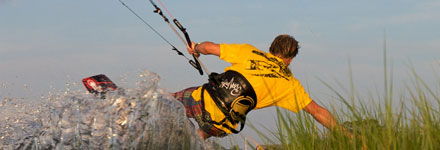
We hear this all the time: “I’m not very active, never skied, surfed, played other sports etc”. This doesn’t matter. Fortunately by choosing kiting you are getting into a sport that has a very steep learning curve. With the proper instruction and equipment you can expect to see great results after just a few days under a kite. Typical learning time to get up to your first rides vary from a few hours (for people converting from other water sports) to just a few days.
After you have cracked the holy grail of kiting (upwind riding) then you are well on the way to becoming an advanced kiter. The key as always is PRACTICE, the more you do the faster you will reach your goals. There are also self-help videos and REAL instructional DVDs which can really help with adding new skills to your sport.
Get the REAL Zero 2 Hero digital copy for $9.99: Buy Now
3) Weather – How do I know when to go?

You have probably heard watersports enthusiasts relentlessly talking about the weather and if the wind is going to be good tomorrow, next week or next month. There are several reliable sites giving up to date and detailed wind and weather forecasts. This means you can be sitting at your desk one minute and on the road the next hunting down perfect conditions. REAL is a fan of a few sites such as Ikitesurf.com and Wind Alert but everyone has their own preferences.
Once you go to a new kite beach/lake/lagoon you will start to get to grips with what the forecast actually translates to on the day. There may be wild swings from the on-beach reading versus the forecast so local knowledge still plays a huge part. Remember, if you turn up at a busy beach and there is no-one out on the water, there is probably a reason. Again good instruction will teach you how to read the conditions properly.
4) When can I go out by myself?
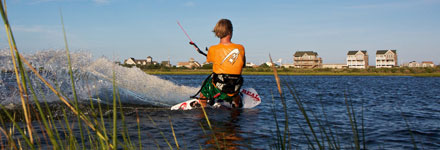
There is no right or wrong on this one so you will have to make the decision for yourself based around your confidence level. Once again if you have taken lessons you will be far more confident in your equipment and therefore more likely to be happy to step into the water without supervision. The best advice that we can give is that when you feel you are ready, grab a few buddies who kite and get together for a session. That way if you do get in trouble you can always call for aid or just get some advice on what to rig up and fly.
Always do a quick 5 second assessment of your kiting area. Be especially vigilant of upwind and downwind obstacles. Large houses/hills etc. can create turbulences in the wind which can create dangerous updrafts and gusts. Give yourself plenty of room to launch and land and then get out there and have fun! If in doubt ask someone to identify these hazards so you know what you look for each time you go out. Good instruction will teach you this basic hazard assessment.
5) Gear – What’s Right for me?
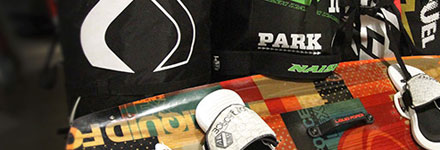
Now comes the next phase in your learning process, what gear to buy? This is another area where the REAL jargon buster can plow through the mud and clear the waters. First things first you are going to want to divide your time equally between kite, board and harness choices. These are the fundamentals of your gear.
Harness: We recommend that picking up a harness early in the proceedings will really help you with early kiting. A good harness is like a good pair of ski boots and if you know that kiting is for you then spending a little extra to be comfortable will make the world of difference to your sessions thereafter.
Kites: The kite is where most of the expense goes and will require some research to make sure that you get a safe and reliable product which can really advance your kiting. The key things for a beginner to look for are simplicity, re-launch and wind range. Most beginners are not going to want to bet the farm on their new found sport so buying one kite with lots of range is a great plan to start with. As you progress, adding kites to the quiver to get out more will mean many more hours on the water. Water re-launch will be very important as this will make every session hassle free and mean that crashing is not an issue. Without going off at a full tangent the best thing to do is to call and talk to experts who will combine your needs with your budget and get you out on the right gear.
Kiteboards: Kiteboards have come a long way since the early days of kiting and now there are some great boards out there that cater to the beginner market. The important data that you need when sizing a board is your weight and skill level. If you are fresh to kiting you will need to get a larger board than your eventual size. This will give you more planing area and keep you going between lulls. More details can be found in this How to Pick A Kiteboard article.
6) Where can I buy? – Getting setup

The kiteboarding market is full of places to buy, some great and some not so reputable. For the beginner the best way to get good advice and make sure that you are getting a good deal as well as a good product is to go out and find the stores that make kiting their business.
As interesting from a price perspective as it may seem, EBay and forums are not really the realm of the beginner as it will always be difficult to find out the true worth of the kite and there are too many stories out there that make us feel this is not the place to start your kite buying. One great way of getting setup is going to be taking lessons and having your coach show you what you are looking for he/she can then recommend the best kiteboarding gear that will allow you maximize your enjoyment.
7) Contacting other kiters – Where’s the session?
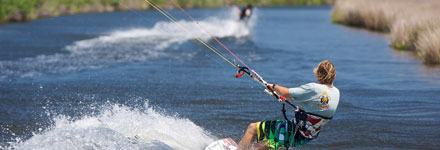
Now that you have the gear, got the training and want to get out on the water it’s advisable to take your first few sessions with some other kiters. For many of us this is not going to be too tough, we have access to kiteable beaches, friends in the sport and great weather sites to give us the latest on when the wind is good.
For those of you with limited exposure to kiting there are great opportunities to connect online. Not only retail store’s Facebook pages (such as REAL’s Facebook Page) but also forums. The most popular of these is KiteForum and you can sign up to get advice on riding locations and also find out when your local area gets good. Typically there will be a buzz when the sessions are on so check back regularly and you can get in on the action. Finally, just turning up at the beach on a windy day and chatting to fellow kiters is a great way to gain valuable knowledge of the area and where works best when!
Collectively, our team of REAL Pros have kited all over the world so if you need help understanding your local spot – our team are here to help.
8) Travel – It’s why we Kite.
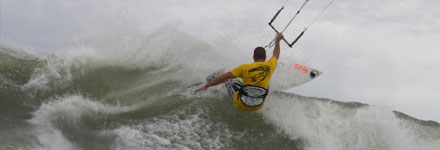
Nearing the end now and you are well on the way to being a fully fledged kiter. No doubt to help your education you will pick up a magazine or two and will be amazed by the stunning photography and portrayal of the sport in amazing locations worldwide. As every kiter you talk to will tell you, your first kite trip can be amazing, full of visceral experiences and magic sessions in far flung windy locations. As always with any kite/surf/sporting trip – travel is the real core of the experience and heading onto the plane with a group of close friends will give you lasting memories of not only the kiting but also undeveloped areas of the globe that have conditions to make any kiter go weak at the knees.
How do we find out about these awesome kiting destinations? Simple! Firstly, the kite magazines are some of the best places to look for inspiration on your next trip, however some of the best tips will come from word of mouth and the people that make their livelihoods the business of kiting. By talking over these destinations with someone in the know you will be able to find out if where you’re going is right for your skill level.
9) Progression – How and where?

Progression is the natural advancement of your skill and as we touched on, varies from person to person. As with any sport, the sooner you begin, the faster you will learn. More importantly practice is the very best way of getting through skill barriers and keeping your kiting fun. Everyone at some point plateaus and this can be based around several factors. Mostly we see this happening because beginners and intermediates are not pushing themselves when out on the water. The best way to overcome this should it happen is to get together with a crowd of kiters who are a similar level to you but pushing it out on the water each time you ride. Film each other, talk through tricks and sessions and use the web and other resources to keep things fresh and exciting.
If things are at a stage where you need more help than just watching videos and talking over your next trip then intermediate or advanced kite lessons can be a great way to break the deadlock. Often it’s a case of a coach watching you kite and spotting technical issues. In no time you will be landing that new trick or heading out there and scoring progressive sessions.
REAL Teaches advanced lessons to any level.
10) Ask the Pros – It’s what we do!
There is very little left to say and hopefully this article has given you some useful insights into what to look out for as a beginner. The most important thing as always is to do your research and get some decent advice. Now for the shameless plug! As always REAL is here for this and you can call us 7 days a week at 866-REAL-548 to get up to date and detailed advice on all the things you will need to get out on the water for the first time. After all we make new riders every day. Have fun out there and let us know how it goes.

